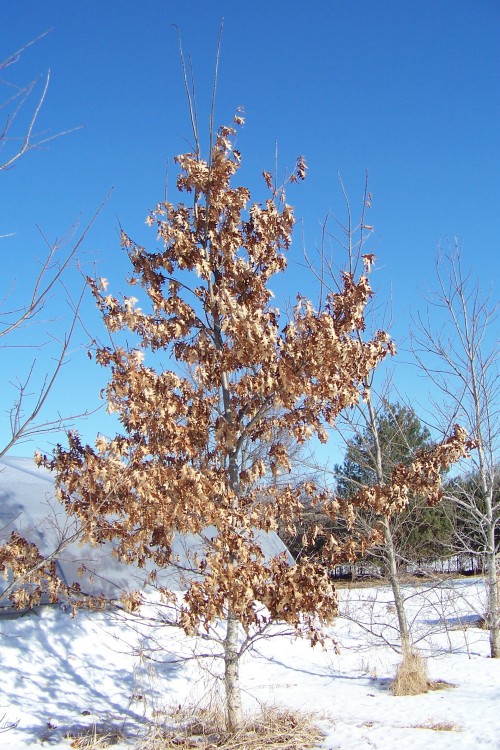
South of the hoophouse stands a young red oak (Quercus rubra) that has defied the winter with a bushy dress of rustling leaves. Even in March, it is conspicuous. Although it is common for some trees to retain a few leaves, this tree has gone all out!
The dead leaves that have been retained are termed marcescent, and are most common on beeches and oaks. A tree usually prepares for winter by reabsorbing nitrogen and other nutrients from the leaves and developing an abscission layer at the base of the petiole, the stalk of the leaf attaching the blade to the stem. In marcescent leaves, the abscission layer may have failed to develop before the leaves were killed by an early frost, or in some tree species, the development of the abscission layer may not be completed until spring. Marcescence is most common in young trees, or on the lower, most juvenile branches of older trees.
Marcescence can make tree branches vulnerable to breakage because the leaves may retain snow and ice in a storm, adding the stress of this addition weight to the branches. However, marcescence can also protect trees by making them less attractive to browsers such as deer and moose.
The question is, why is tree number 4, pictured above, the only one in a line of 6 young oaks to retain its leaves this year?
